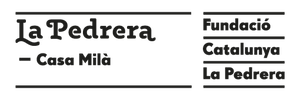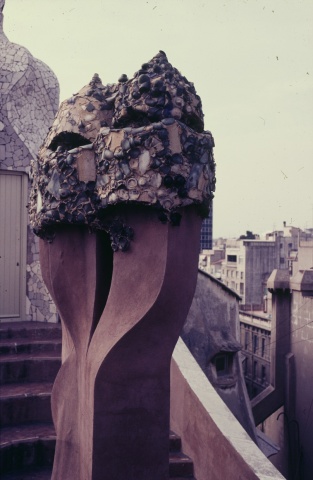The ‘80s, Gaudí and La Pedrera
My association with the work of Antoni Gaudí (1852-1926) began in 1978, about the same time as the restoration of democracy in Spain.
I discovered Gaudí when I arrived in Barcelona. Gaudí and Barcelona are indivisible and I began to study the artist and his work from that moment on. I was horrified at that time at how physical contact with any part of his work left one absolutely filthy, and I wondered why no-one had removed that thick layer of soot and atmospheric contamination from these works of art. At the same time, this dust afforded them a patina that only time can achieve and which made these constructions even more interesting.
Before long, I was asked to restore and clean some of their elements, and this gave me a broader dimension of the architect’s scale, his art and knowledge.
My greatest concerns, doubts and challenges in the field of restoration led me to revive the former “Centre for Gaudí Studies”, which subsequently became the “Gaudí Workshop of the Technical University of Catalonia”. It was there, studying his work on a daily basis over many years that we realised how little we actually know about the architect. Despite all the research that has been carried out, we are left with more doubts than understanding.
Today the works of Gaudí gleam with their own light, and sometimes too much. It would now be important to strengthen the research and disseminate those works that, though less important, have not received the attention or promotion they warrant.
To interpret Gaudí‘s oeuvre in its rightful measure and on its true scale we cannot afford to overlook any of his works or details.
While the Sagrada Familia, the Casa Milà or Parc Güell and some twenty other of his most outstanding works have been the subject of hundreds of monographs, there have been few publications of his other equally relevant works.
Gaudí had a very special personality and devoted as much energy to a restoration work as he did to a new construction, giving the same importance to a hydraulic work as an architectural, which is what has allowed it to remain intact over time.
His work does not belong to a fad or to fleeting movement; his work, as it has survived to this day, is a paradigm of movements that has yet been gestated.
I believe that the accompanying photograph provides a clear example of this need.
Luis Gueilburt
Contributor:
- Luis Gueilburt
Luis Gueilburt is a sculptor who has exhibited his works and monumental sculptures in individual and collective exhibitions. Many of his pieces are held in private and public collections in Spain, Japan, Argentina, Mexico, Guatemala, Ecuador and Peru. Since 1997 he has been a visiting lecturer at the Technical University of Catalonia, Barcelona Polytechnic College, where he teaches a monographic course on the life and work of Antoni Gaudí. Since 1998, Gueilburt has been responsible for Research Line Gaudí and Catalan Modernisme, architectural and artistic style of 1900; The Technical University of Catalonia. Since 1980, he has participated in courses, conferences, seminars, workshops and conferences on the work of Gaudí in universities and forums in Spain, France, the United States, Mexico, Italy and Argentina. He has been organizing the International Conference of Gaudí Studies since 1994. From 1993 to 2003 he directed the Centre for Gaudí Studies. Gueilburt had a role in the creation in 2003 of the Gaudí Workshop - EPSEB .UPC, and is currently the academic director and collaborator of The Heritage Archive.

